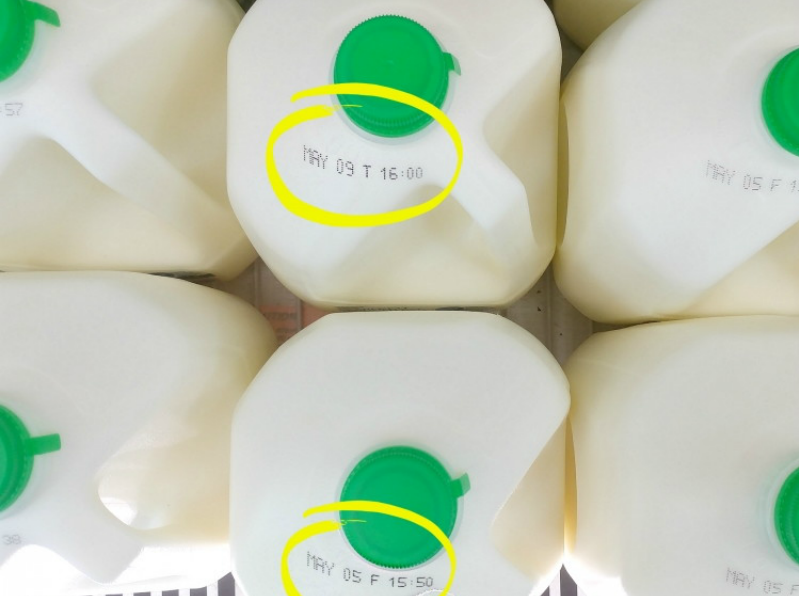We know most of you headed out to the grocery store as the weather forecast called for ice and precipitation this weekend. Krazy Coupon Lady gave us some great tips for your next shopping trip.
1. Check the dairy codes to know when to buy generic milk.
Every gallon of milk at the supermarket is stamped with a dairy code. Look for two digits, followed by a hyphen, followed by 1-5 more digits. Example pictured: 16-05.
Enter the code at WhereIsMyMilkFrom.com to find the dairy that produced it.
Why does this matter? If the dairy code on the store brand gallon matches the code on the name brand, you know for sure the milk came from the same cows. Save a buck and skip the name brand label.
2. Purchase products by the case to save 10%.
They might not want you to know it, but many supermarkets will give you a discount on products if you buy in bulk.
Whole Foods offers discounts on bulk items as well. You can get up to 10% off if you agree to buy a case. Buying meat? Buy more than three pounds and it’s considered “bulk,” meaning you can save $0.50 per pound.
3. Read produce PLU stickers to verify organic produce.
Look at the PLU on your fruits and veggies. A four-digit PLU means the produce was grown “traditionally.” A five-digit PLU that begins with a 9 means produce was grown organically.
4. For the freshest dairy, grab from the back of the fridge.
Grocery stores rotate stock so that the oldest is placed in the front, and the newest in the back.
This ensures that the products sell before the “sell by” date. But if you want your milk to last up to five days longer, grab your gallon from the back of the shelf.
5. Take a reusable bag and save money on your purchase.
Certain stores (like Target) will give you a $0.05 discount if you bring in reusable bags instead of using those obnoxious plastic ones in-store.
Other stores like Whole Foods and Kroger all offer discounts as well.
6. Use colored bread tags to quickly locate the freshest loaf.
Bread companies use different colors so that their reps can quickly turn over new bread and remove old from the store. If you’re shopping on a Thursday and you see red, green and blue tags, you want to grab the red tags for the freshest bread.
7. “Large” eggs are sometimes just as big as “Jumbo” eggs. Buy the cheaper carton.
Next time you open a carton of eggs, look for more than to see if there’s a cracked egg. A larger size of an egg may actually be the same size as a “smaller” sized carton.
Please join our FREE Newsletter



















